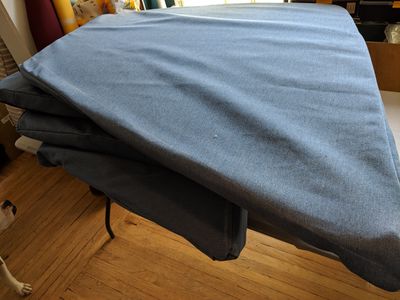
Dragons Past and Present
- William Estep
- Writing
- August 25, 2013
Table of Contents
Below is a paper I wrote for a college lit class. It was a fun research project. Enjoy – Bill
Dragons appear in our oldest mythology and folklore. Dragons have been a source of terror and mystery, throughout history. They populate early mythology, medieval literature, the Renaissance, and modern fiction. The dragons of today share many characteristics of the dragons from our earliest folklore and myths. No longer the feared hero’s antagonist, or the confidants of emperors, today dragons live on in our fiction.
Most cultures have a reference to dragons. “The dragon figures in the history and mythology of almost every race in the world, and has been endowed with both beneficent and malevolent attributes” (Clair, 1967, p. 176)1. Standing just on the edge of reality, like superstition, dragons fill the early stories with mystery and fantasy, the early recollections border on worship and belief. “Prior to the sixteenth century, thousands of eyewitness accounts of dragon sightings were recorded” (Jones, 2000, p. 3)2. But where do these creatures come from? Human history, culture, stories and folklore predate the written word by many thousands of years. Early writings record stories that may have been generations or centuries old. For example, writers of the Chou dynasty wrote about the Hsia dynasty, an early Chinese culture, yet there is no historical evidence of the Hsia’s existence, and nothing is “known of its political structure” (Birrel, 1993, p. 60)3. Likewise, there isn’t any evidence that dragons exist; however, there are several theories about the source of the dragon myth.
One theory about the origins of dragons is that dragons are an amalgam, or mashing up of several threats or fears of early man. In the introduction to his book, An Instinct for Dragons, David Jones refers to a study where the auditory alarms to various predators are studied among a select group of African monkeys. The monkeys have three very distinct predators, and distinct auditory calls for each, the leopard, the martial eagle, and the python. These three predators together make up the common components of a dragon, the claws, the scales, the fangs, the lizard like body, and wings. Jones’s speculation is that early man faced similar threats, and over the millennia before the written word, these threats became mixed in stories. Supporting the amalgam theory, Chinese scholars hypothesize the dragon is a “joint image of different animals…a combination of totems that originally belonged to several main tribes that integrated with each other in ancient China” (Yang, 2005, p. 102)4. Another theory is that the dragon is an iconic prototype for a “crocodile, tornado, or lightning, or even the river” (Yang, 2005, p. 102)4, or some other presence in the early world.
Most cultures have some reference to dragons, of course, the names for these creatures are different, and in some cases the dragons’ characteristics are different, but not so different as to be unrecognizable. “The Chinese call it lung the Hawaiians, kelekona or perhaps mo’o. It is zmaj to Croatians and Serbians, lohikaarme to the Finns, and unktena to the Cherokee Indians of North America” (Jones, 2000, p. 1)2. The English word for dragon comes from early Greek Drakon meaning ‘serpent’.
Dragons basically fall into two large categories, the western dragons of Europe, and the eastern dragons of Asia. Dragons come in a variety of shapes, sizes and colors. The eastern dragons are able to change shape and size instantly, while the western dragons are born small, but rapidly grow to huge sizes. Dragons can have any variety of claws, heads, scales, feathers, bat like wings, no wings, multiple heads, fangs, barbed tails; the list of variations is virtually endless. Dragons can fly with and without wings, and breath fire; they can poison enemies and even spit acid. The western dragons are frequently identified as living or hiding in caves, abandoned fortresses or under the sea, hoarding treasure. The eastern dragons live in lakes, ponds, rivers, and high on the mountains causing mist and fog to roll down into the valleys.
The early western dragons are generally seen as evil, or the embodiment of evil. “Since medieval theology made the dragon the symbol of the Devil, it followed that many saints were, in Christian legend, the slayers of dragons” (Clair, 1967, p. 179)1. The early eastern dragons have both beneficial and malevolent characteristics, there are exceptions however, and while dragons, as Clair points out are thought of as evil in western literature, they are usually simply responding to provocation, like a threatened animal.
In early Greek literature, many creatures wear the name Dragon. One of the earliest recorded is Typhon. Born from the Earth, Typhon forced the Greek gods to flee to Egypt. Zeus fought Typhon unsuccessfully twice before finally besting him on the third attempt. Typhon was large, ferocious, associated with fire, and said to hurl mountains,
“A flaming monster with a hundred heads,
Who rose up against all the gods.
Death whistled from his fearful jaws,
His eyes flashed glaring fire” (Hamilton, 1942, p. 69)5
Zeus finally gets control of lightening and thunder and is able to defeat Typhon. The dragon is wounded and finally crushed under Mount Aetna in Sicily. A single drop of the dragon’s blood impregnates Gaea, the earth goddess. Dragons are often sires to heroes and rulers in both Western and Eastern literature. Typhon’s offspring includes the Kings of Athens as well as Ladon and Echidna. Ladon is a hydra that protects the golden apples of the garden of Hesperides, and is killed in one of Hercules trials. Echidna is a chimera, “a fire-breathing creature with a body that was, from front to back, that of a lion, a goat, and a dragon” (Jones, 2000, p. 137)2. The chimera is the model used for Saint George’s dragon in medieval art and literature.
Dragons play a significant role in Chinese culture, literature, and ancient mythology. The dragon is “One of the most important mythical creatures in Chinese mythology” (Yang, 2005, p. 100)4. The eastern dragons have control over water; they are responsible for storms and floods, and are still offered prayers when rain is needed. The dragon is the symbol of the Chinese Emperor, and written records of Chinese dragons go back over 6,000 years. Archeologists have discovered dragon sculptures 6,400 years old (Yang, 2005, p. 100)4.
Birrell discusses the early writings of the Hsia dynasty, and the role of dragons in that early society. “A few dragons in mythology themselves have distinctive names, such as Chu Lung or Torch Dragon and Ying Lung or Responding Dragon” (Birrell, 1993, p. 60)3. These dragons possessed power over light, dark and water. The early Hsia culture had professions such as dragon tamer and “Master Who Rears Dragons” (Birrell, 1993, p. 60)3. Dragons in early Chinese mythology often conspired with humans. As mentioned, they possessed power over water and could cause storms or droughts, “One of the most important mythical creatures in Chinese mythology, the dragon is the controller of the rain…great helper of heroes; and bearer of gods or demigods” (Yang, 2005, p. 100)4.
In the medieval poem, Beowulf, the adventurer and king Beowulf defeats many foes, and when his kingdom is threatened by a dragon, despite his age, he takes up arms and fights the dragon, killing it. Beowulf is poisoned by the dragon, and dies from his wounds. In the wonderful translation by Seamus Heaney, we learn that the dragon awakes and attacks because an intruder steals a treasured cup,
“He Beowulf ruled it well
for fifty winters, grew old and wise
as warden of the land
until one began
to dominate the dark, a dragon on the prowl
from the steep vaults of a stone-roofed barrow
where he guarded a hoard; there was a hidden passage,
unknown to men, but someone managed
to enter by it and interfere
with the heathen trove” (Beowulf, 2000, p. 151)6
When the intruder stumbles on the treasure, and steals a cup, the dragon is outraged.
“The dragon began to belch out flames
and burn bright homesteads; there was a hot glow
that scared everyone, for the vile sky-winger
would leave nothing alive in his wake” (Beowulf, 2000, p. 157)6
When the dragon and warrior meet face to face, each recognizes the mortal threat of the other,
“Roused to a fury,
each antagonist struck terror in the other” (Beowulf, 2000, p. 173)6
Beowulf’s dragon is the archetype western dragon, very old, living underground and guarding a treasure lost and forgotten by man. The dragon flies and spreads terror through the land looking for vengeance. It is well armored and fights with intelligence and zeal, yet it is almost completely animalistic.
In another medieval story, the 14th century French tale, Voeux du Paon, a woman turns into a dragon. Melusine is the wife of the count of Anjou; they have four children together. One day, the count confronts his wife about her peculiar habit of leaving the church service halfway through, just before the chalice is raised before the congregation. He tests her, by placing knights at the exits to the church, and when she is unable to leave, “In a rage, she sent forth a shattering roar, metamorphosed into a dragon, and grabbing two of her children, flew from the church” (Jones, 2000, p. 145)2.
During the Renaissance, Edmund Spenser’s epic poem, “The Faerie Queene” tells how St. George, also known as the Red Cross, fought a great dragon. The scene is told as a Christ allegory. The fight lasts for days, but in the end, St. George is victorious. The dragon, with great strength and ferocity, breathing fire and steam was made from the essence of death,
“For nigh thereto the ever-damned beast
Durst not approach, for he was deadly made,
And all that life preserved did detest;
Yet he it oft adventured to invade” (Spenser, 1965, p. 217)7
The dragon is described as enormous, shadowing mountains and valleys, and armored with scales,
“And over, all with brazen scales was armed
Like plated coat of steel, so couched near
That nought mote pierce” (Spenser, 1965, p. 207)7
The dragon makes a mistake, and tries to snatch the knight and horse, and fly off, but the dragon misjudged the weight and the knight uses the chance to spear the dragon under a wing with his lance,
“Quickly the Red Cross Knight,
Reaching beneath one wing,
Thrusts with his fierce lance…
Black blood poured forth and drowned the land around” (Spenser, 1963, pp. 116-117)8
Ultimately, St. George is the victor. The story even comes with a princess, a damsel in distress, and a fountain or stream that restores life.
Perhaps the most famous modern-day dragon is Tolkien’s Smaug. Like older stories, the dragon is hoarding a treasure of riches deep inside a mountain. Smaug is still fierce and terrifying, but he takes on more human characteristics. The dragon is enraged when Bilbo Baggins steals an item from the hoard. The item he picks, is a large two-handled cup, like the thief in Beowulf. Tolkien’s possible basis for this story, and ultimately the Lord of the Rings stories is the Old Norse “Volsunga Saga, where the dwarf Andvari has a golden treasure and a magic ring that are seized by Fafnir, a man transformed into a dragon by the curse of greed” (Dickerson, 2006, p. 16)9. But Tolkien was clearly a fan of Beowulf, and it is possible the encounter with Smaug is a recreation of the great final battle. In The History of the Hobbit, Rattliff says that Tolkien had originally planned for Bilbo to be the dragon-slayer (Rattliff:2007, p. 374). But, Tolkien himself points out, “The placing of the dragon is inevitable: a man can but die upon his death-day” (Tolkien, 1984, p. 32)10. Tolkien’s Smaug is a full character; he is ruthless and devious, intelligent and beguiling. The use of Smaug in The Hobbit shows what a dragon should be, and emphasizes the lack of depth in the dragon of Beowulf. “Beowulf’s dragon, if one wishes really to criticize, is not to be blamed for being a dragon, but rather for not being dragon enough, plain pure fairy-story dragon…with bestial life and thought of his own” (Tolkien, 1984, p. 17)10.
The dragons in Le Guin’s Earthsea series are similar to those already seen in shape and ferocity, but in addition to hoarding gold or treasure, they have knowledge the humans do not. In her world, magic or the power over an object is based on knowing its true name. The dragons of Earthsea are very old and have knowledge of the earth and the names that man has lost. In the first book, Earthsea, the main character Ged is an apprentice wizard who has inadvertently let loose an evil on the world. In his chase to track down the evil, he must approach the island Pendor. Generations earlier, the island was taken over by a very old dragon. “Unavenged, Pendor had been left to the dragon, with all its bones, and towers, and jewels stolen from long-dead princes of the coasts of Paln and Hosk” (Le Guin, 2004, p. 85)11. Merlin from the Arthurian legends was called Pendragon, or head dragon. The name of the island, Pendor is no coincidence. The name immediately calls to mind the Arthurian legends and those early dragons, and sets the stage for the battle to follow.
Like Beowulf, Ged has come to meet the dragon on his terms. He calls out the dragon, “Usurper of Pendor, come defend your hoard!” (Le Guin, 2004, p. 87)11. The dragon’s offspring battle Ged, and when they are dying or dead, the old dragon agrees to talk. “When he was all afoot his scaled head, spike-crowned and triple-tongued, rose higher than the broken tower’s height, and his taloned forefeet rested on the rubble of the town below. His scales were grey-black, catching the daylight like broken stone. Lean as a hound he was and huge as a hill” (Le Guin, 2004, p. 89)11. The dragons’ descriptions are familiar, the scales and winged body, the serpent features, and awesome size. In the end, Ged and the dragon reach a bargain. The dragons are often represented as intelligent, crafty, cunning, but steadfast in keeping their word, an interesting conflict between greed and integrity. In this case, the bargain was shared safety,
“Safety. Your safety. Swear that you will never fly eastward of Pendor, and I will swear to leave you unharmed.”
A grating sound came from the dragon’s throat like the noise of an avalanche far off, stones falling among mountains. Fire danced along his three-forked tongue. He raised himself up higher, looming over the ruins. “You offer me safety! You threaten me! With what?”
“With your name, Yevaud.” (Le Guin, 2004, p. 91)11
Ged fulfills his obligation, secures assurance from the Dragon of Pendor that the people of Earthsea will be safe from the dragons, and earns for himself the name dragonslayer.
In another modern example, the dragons of Pern are reminiscent of the ear
ly Eastern dragons working closely with humans. In McCaffrey’s world, the dragons and humans are linked together. At birth, the dragons “impress” on a human, and they share a telepathic bond.
“A feeling of joy suffused Lessa; a feeling of warmth, tenderness, unalloyed affection, and instant respect and admiration flooded mind and heart and soul. Never again would Lessa lack an advocate, a defender, an intimate, aware instantly of the temper of her mind and heart, of her desires” (McCaffree:1988, p. 83).
Despite the closeness, the dragons of McCaffrey’s world remain different, or alien. They have different priorities then their human counterparts. Yet their savagery is limited to feeding and destroying the “thread” that threatens their planet. There is great passion in McCaffrey’s dragons. In the Sci-Fi world of Pern, the dragons were breed and genetically engineered by the early colonists from the planets native fire-lizards, and the dragons are capable of breathing fire by ingesting certain rocks. They maintain their elaborate, color based social structure, and this social structure is reinforced by the dragonriders. Each weyr, or colony of dragons and dragonriders has a lead queen dragon, and a lead bronze dragon. The paired riders of these two dragons hold the human leadership roles as weyrwoman and weyrleader. However, the choices are based off of the queens mating flights. The strongest and most agile bronze dragon, and by default, the rider become the weyrleader after successful mating. Queen’s are the largest dragons and are gold, then bronze, brown, blue and breen dragons in rank of size and social status in the group.
Taking a critical look at dragons from early mythology and folklore, to present day, modern culture is taking the monstrous often animalistic, fire breathing dragons of the past, and embracing them in fiction. Dragons in the modern world are used as symbols of strength and wisdom. The Dragon is the only mythical creature in the Chinese zodiac, and they are still seen as good luck. They are mascots of sports teams, used in architecture, games and decorations. They are shown in movies as misunderstood, or humorous analogs. Today dragons are not believed in, but are still an important part of society. In early literature, there were clear heroes and villains; there were clear boundaries between good and evil, between the white hats and the black hats. The eastern dragons ruled sky and water, worked with rulers, and consorted with the gods and goddesses. The dragon of today could be an amalgam of the early dragons. Today dragons are still portrayed as terrifying and monstrous, but they possess great intelligence and humor. People today may no longer need the hero’s of the past and the equally great nemeses; people are perhaps less afraid of the dark, and less inclined to tilt at windmills. And the evil monsters of the past, the dragons and Dracula are not as scary or as real as they once were. Yet despite this, the dragon of 6,000 years ago, and the dragon today are still recognizable as cousins. The fire-breathing, mountain hurling Greek dragons, to the intelligent friends of man from the early Chinese, are still visible in the modern dragons. While we may not believe they are real today, we still occasionally need to feel the awe and wonder these creatures inspire, so the dragons live on in our fiction.
Bibliography
Clair, Colin. Unnatural History. New York: Abelard-Schuman, 1967. ↩︎ ↩︎
Jones, David E. An Instinct For Dragons. New York: Routledge, 2000. ↩︎ ↩︎ ↩︎ ↩︎
Birrell, Anne. Chinese Mythology: An Introduction. Baltimore: The Johns Hopkins University Press, 1993. ↩︎ ↩︎ ↩︎
Yang, Lihui and Deming An. Handbook of Chinese Mythology. Santa Barbara, California: ABC-CLIO, 2005. ↩︎ ↩︎ ↩︎ ↩︎ ↩︎
Hamilton, Edith. Mythology: Timeless Tales of Gods and Heroes. New York: Warner Books, 1942. ↩︎
Beowulf. Trans. Seamus Heaney. New York: Farrar, Strous and Giroux, 2000. ↩︎ ↩︎ ↩︎
Spenser, Edmund. Books I and II of The Faerie Queene: The Mutability Cantos and Selections from The Minor Poetry. Ed. Robert Kellogg and Oliver Steele. New York: The Odyssey Press, 1965. ↩︎ ↩︎
Spenser, Edmund. Saint George and the Dragon. Ed. Sandol Stoddard Warburg. Boston: Houghton Mifflin Company, 1963. ↩︎
Dickerson, Matthew and Jonathan Evans. Ents, Elves, and Eriador: The Environmental Vision of J. R. R. Tolkien. Lexington, Kentucky: The University Press of Kentucky, 2006. ↩︎
Tolkien, J.R.R. The Monsters and The Critics and Other Essays. Ed. Christopher Tolkien. Boston, Houghton Mifflin Company, 1984. ↩︎ ↩︎
Le Guin, Ursula K. A Wizard of Earthsea (The Earthsea Cycle, Book 1). New York: Spectra, 2004. ↩︎ ↩︎ ↩︎ ↩︎

















